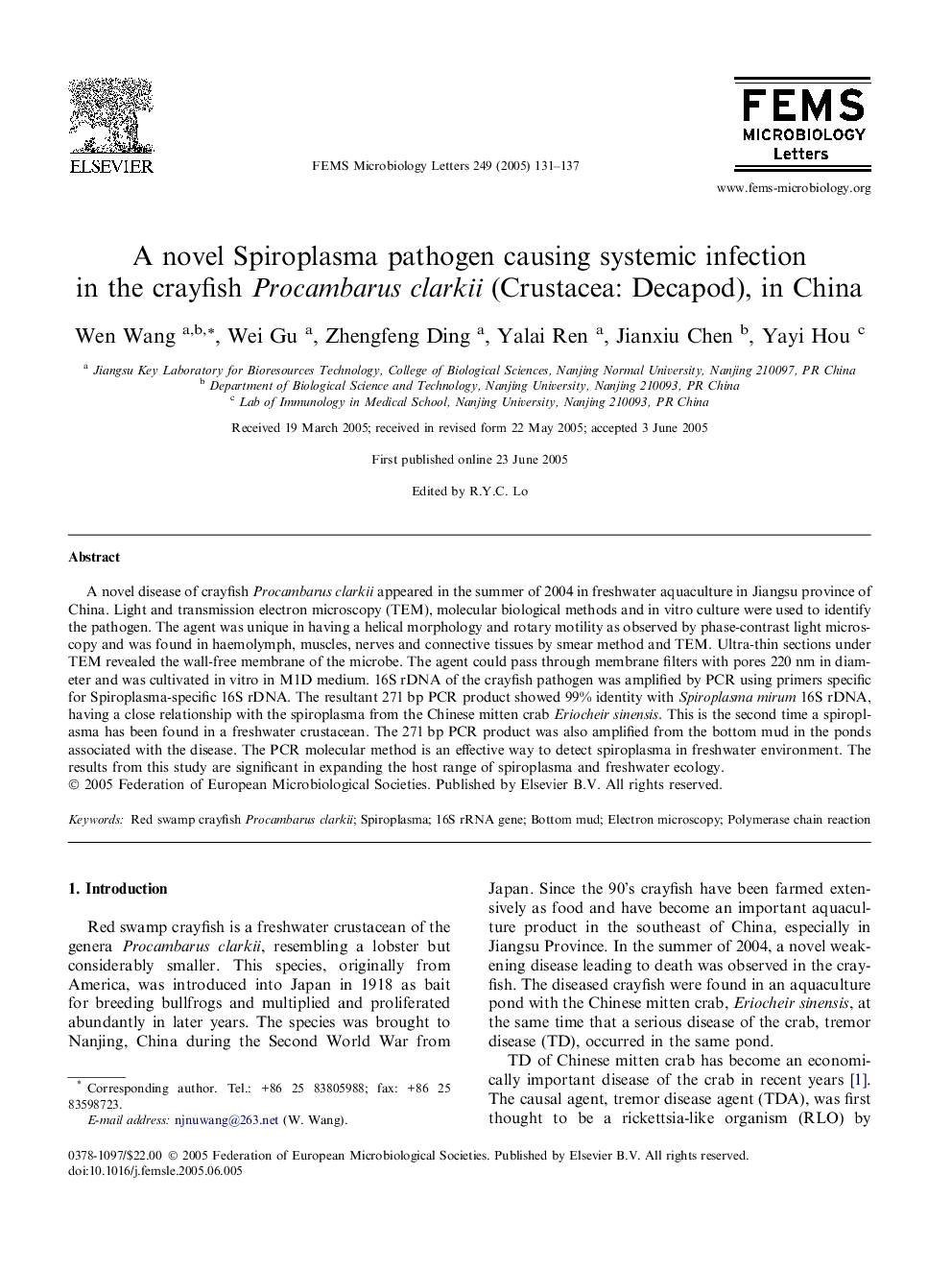| Article ID | Journal | Published Year | Pages | File Type |
|---|---|---|---|---|
| 9121548 | FEMS Microbiology Letters | 2005 | 7 Pages |
Abstract
A novel disease of crayfish Procambarus clarkii appeared in the summer of 2004 in freshwater aquaculture in Jiangsu province of China. Light and transmission electron microscopy (TEM), molecular biological methods and in vitro culture were used to identify the pathogen. The agent was unique in having a helical morphology and rotary motility as observed by phase-contrast light microscopy and was found in haemolymph, muscles, nerves and connective tissues by smear method and TEM. Ultra-thin sections under TEM revealed the wall-free membrane of the microbe. The agent could pass through membrane filters with pores 220Â nm in diameter and was cultivated in vitro in M1D medium. 16S rDNA of the crayfish pathogen was amplified by PCR using primers specific for Spiroplasma-specific 16S rDNA. The resultant 271Â bp PCR product showed 99% identity with Spiroplasma mirum 16S rDNA, having a close relationship with the spiroplasma from the Chinese mitten crab Eriocheir sinensis. This is the second time a spiroplasma has been found in a freshwater crustacean. The 271Â bp PCR product was also amplified from the bottom mud in the ponds associated with the disease. The PCR molecular method is an effective way to detect spiroplasma in freshwater environment. The results from this study are significant in expanding the host range of spiroplasma and freshwater ecology.
Related Topics
Life Sciences
Biochemistry, Genetics and Molecular Biology
Genetics
Authors
Wen Wang, Wei Gu, Zhengfeng Ding, Yalai Ren, Jianxiu Chen, Yayi Hou,
